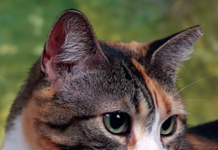Food preservatives labeled “natural” sound healthy, but they’re not necessarily better at keeping your cat’s food fresh. Depending on the level of fat in the food, artificial preservatives can sometimes do a better job, says nutritionist Joseph Wakshlag, DVM, Ph.D., Associate Professor at the Cornell University College of Veterinary Medicine. “The chemical preservatives are typically used with high-fat products because fats will go rancid pretty quickly,” he says.
Manufacturers add preservatives to foods to prevent spoilage caused by bacteria, molds, fungi, or yeast. The preservatives also slow or prevent changes in color, flavor, or texture, and maintain freshness by delaying the onset of rancidity. Artificial preservatives include sodium erythorbate, sodium nitrite, sodium benzoate, calcium sorbate, potassium sorbate, calcium propionate, BHA, BHT, and EDTA.
Rosemary Extract
Commonly used natural preservatives are tocopherols such as vitamin E and its derivatives. When the label on the bag says “naturally preserved with mixed tocopherols,” that means that vitamin E is on the job. After vitamin E, the second most utilized natural preservative is rosemary extract, Dr. Wakshlag says. It contains ascorbic acid and other types of antioxidants that work to quench free oxygen, which can damage the proteins and fats in your cat’s food.
Despite their “natural” label, natural preservatives are usually formulated in a laboratory. According to the Food and Drug Administration, some ingredients found in nature can be manufactured artificially. Production in a laboratory is usually more economical and ensures that the preservatives have greater purity and more consistent quality than their natural counterparts, the FDA says.
Your nose is likely not up to determining if a naturally preserved dog food is still good, but if your more scent-sensitive feline turns up his nose at the food or eats with less gusto, it may be going stale. Most dry cat food has a shelf life of approximately one year, but Dr. Wakshlag has his own rule for any food that contains more than 20 percent fat: “I like to use it within six months.”
The main chemical preservatives are BHA, BHT, and ethoxyquin. Many pet owners have raised concerns about their presence in cat food.
– BHA is short for butylated hydroxyanisole.
– BHT stands for butylated hydroxytoluene.
Both phenolic compounds are chemical antioxidants that have a preservative effect on fats because oxygen reacts to them instead of oxidizing fats or oils and causing them to spoil. BHA has been found to cause cancer in various animal studies, leading the National Institute of Health’s National Toxicology Program to describe it as “reasonably anticipated to be a human carcinogen.” Both BHA and BHT, however, fall under the category of additives labeled GRAS, or generally recognized as safe. Although no available evidence demonstrates a hazard when BHA and BHT are used at current levels, the FDA says uncertainties exist, requiring that additional studies be conducted.
Suspected Health Problems
Ethoxyquin is a chemical preservative that helps to prevent the destruction of some vitamins and related compounds in animal food and to prevent peroxides from forming in pet foods. In the 1990s, pet owners attributed health problems such as allergic reactions, skin problems, major organ failures, behavior problems and cancers to ethoxyquin’s presence in pet foods. No scientific evidence supported the claims, but ethoxyquin has been linked in manufacturer studies to increases in the levels of liver-related enzymes in the blood and a dose-dependent accumulation of a hemoglobin-related pigment in the liver.
The health effects of these changes are unknown, but in 2009 the FDA asked the pet food industry to voluntarily lower the maximum level of use of ethoxyquin from 150 ppm to 75 ppm. Most pet foods that contained ethoxyquin never exceeded the lower amount, even before this recommended change, the FDA says.
Should you worry about artificial preservatives in your cat’s food? Dr. Wakshlag says no. “They get a bit of a bad rap because they are not natural chemicals, but most chemically based preservatives in the food industry typically go through toxicity studies. If you give enough of anything, you can cause liver or kidney issues, or you can cause a tumor to develop. Many scientific studies are performed on rodents and everybody claims that ‘It caused disease X to occur in a rat,’ but the amounts that are used is 1/1000th of the amount that causes these problems in toxicity studies.”
A food’s quality is more important than how it is preserved, he says. “I’d rather see my cats eat a very small amount of a chemical preservative and ensure that they aren’t eating rancid food. In the best of all worlds, you get a bag that has natural preservatives and you use it within three to four months, and you don’t have to worry about chemical preservatives at all.”



